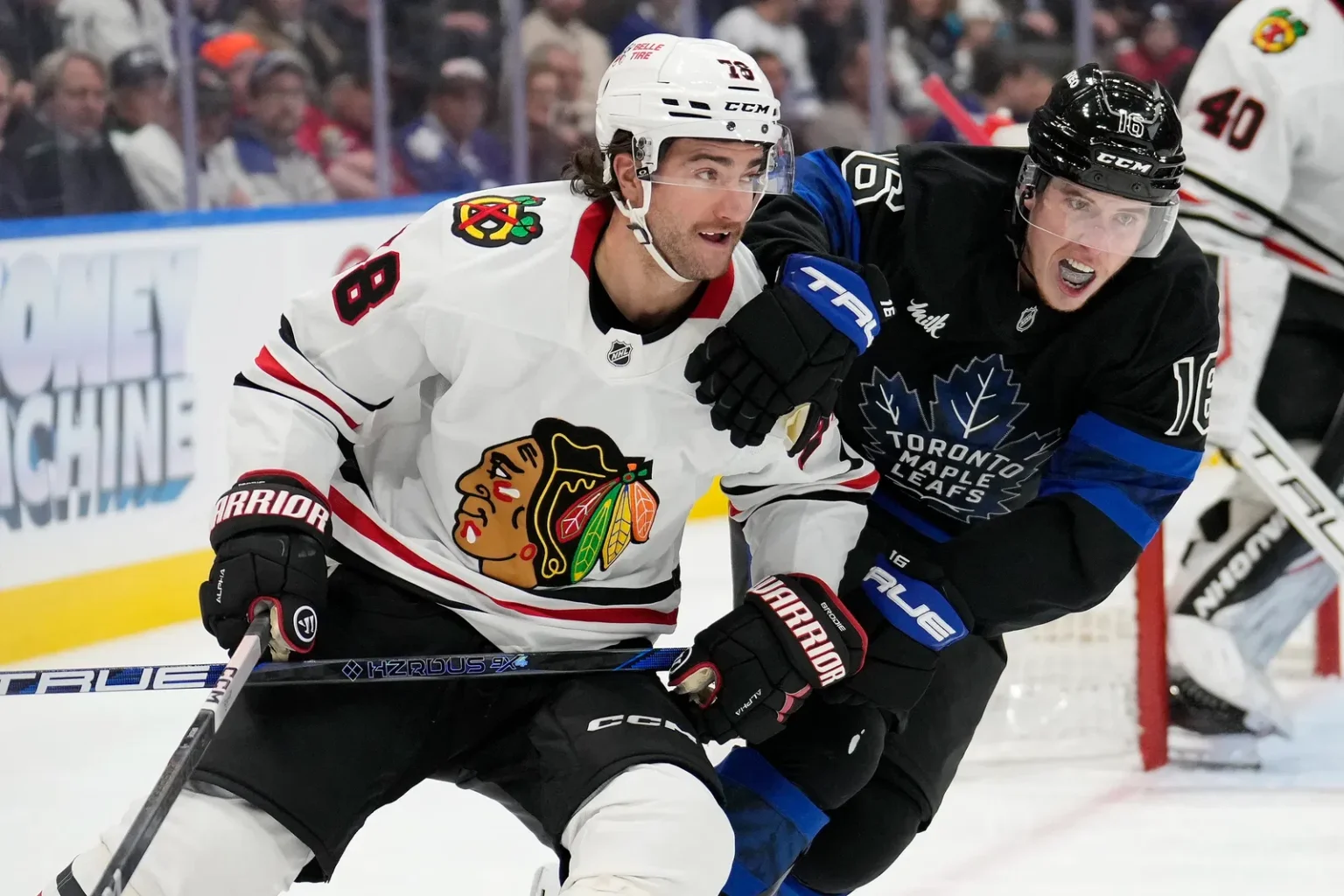The NHL’s buyout window is now open, and the list of possible buyout candidates shares a connection: a decent handful of them are either current or former members of the Toronto Maple Leafs.
In THN.com’s list of potential buyout candidates, a whopping five of seven players had direct ties to the Leafs.
Those five players – left Pierre Engvall of the New York Islanders, defenseman TJ Brodie of the Chicago Blackhawks, blueliner Justin Holl of the Detroit Red Wings and current Leafs players Ryan Reaves and David Kampf – all had disappointing seasons in 2024-25, so it’s hardly a shock that teams might be considering (or in Brodie’s case, have already decided) to buy out their deals.
But the Toronto connection tells you something many hockey observers already know – namely, that the spotlight that comes with being a Leaf can artificially inflate the value of a player, at least for the short term.
This is why teams like the Isles shelled out big money and long term for a relatively unproven asset like Engvall. The Swedish pivot signed an astonishing seven-year, $21-million contract with the Islanders in the summer of 2023.
It took only a year for the Isles to have buyer’s remorse on the contract, placing Engvall on waivers in October 2024 after he had only played 92 games in an Islanders uniform. He also only had eight goals and 15 points in 62 games this past season. The Leafs didn’t sign Engvall to that contract, but you have to imagine former Islanders GM Lou Lamoriello’s connection to Toronto factored into his decision to sign Engvall long-term.
Meanwhile, Brodie and Holl also had the benefit of using their time in the Toronto spotlight to be signed by the Blackhawks and Red Wings, respectively. Chicago and Detroit should’ve seen the Maple Leafs’ decision to let Holl and Brodie leave as a warning sign, but they didn’t, and Brodie got a two-year, $7.5-million contract while Holl got a three-year, $10.2-million deal.
It’s hard to discern which contract was worse between the two of them.
Holl quickly stood out like a sore thumb in Detroit, with his defensive deficiencies exposed almost immediately. He only averaged 14:48 of ice time in ’24-25, more than five minutes under his 20:14 average in his last season with the Leafs. And Brodie eventually became a regular healthy scratch less than one year into his time in the Windy City with a career-low average ice time of 15:38.
Each of the two D-men had some good days as Maple Leafs, but there’s no question their value was boosted considerably by Toronto’s profile in the media.
This isn’t to suggest most of the players we’ve mentioned don’t have a place in the NHL. (That said, at this stage, Reaves simply isn’t an NHLer anymore.)
On less-costly contracts, the expectations on many, if not most of them, would’ve been greatly reduced. But playing for the Leafs clearly inflates the value of players, and teams need to take a careful approach to signing anyone who’s played in Toronto. And that applies to all the players we’ve mentioned, but especially Kampf, Reaves and probably winger Calle Jarnkrok, another candidate to be bought out of his contract with the Maple Leafs.
Any time an NHL team considers acquiring a former Maple Leaf, there should be a serious case of buyer beware. Just because a player had a few moments of success in the white-hot spotlight of Toronto, that doesn’t mean they’re worth throwing a boatload of money at.
Playing in Toronto doesn’t automatically make you great. It only makes you seen, and that’s not reason enough to invest vast sums of money in someone who you probably could replace with someone else on a far cheaper contract.
Get the
latest news and trending stories by following The Hockey News on Google News and by
subscribing to The Hockey News newsletter here. And share your thoughts by commenting below
the article on THN.com.
Read the full article here


